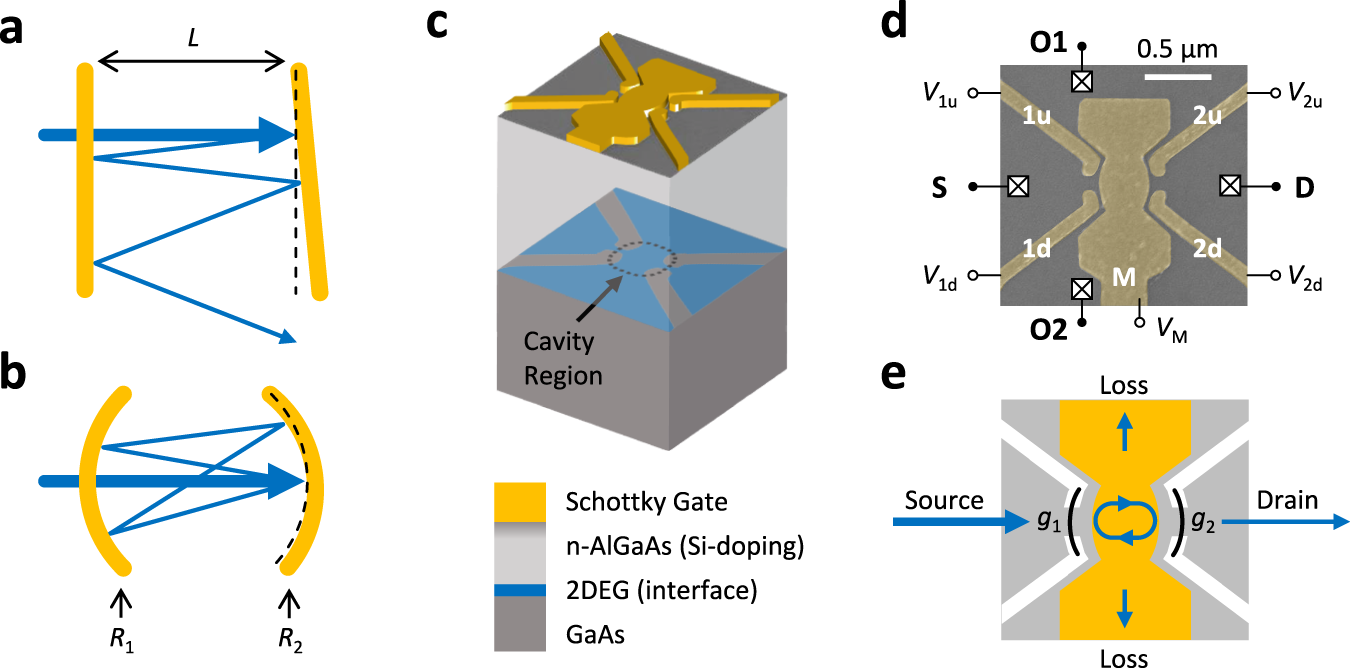
Source: ResearchGate
Understanding Optical Resonator Modes
Optical resonators are fundamental components in many photonic devices, including lasers and interferometers. They are designed to support specific electromagnetic field distributions known as resonator modes. These modes are critical for the efficient operation of devices that rely on controlled light propagation.
What are Resonator Modes?
Resonator modes are specific patterns of electromagnetic fields that can exist within an optical cavity. These patterns repeat themselves after a complete round trip through the resonator, maintaining their amplitude profile and optical phase, except for possible power losses. Resonator modes are crucial in applications such as laser resonators, Fabry–Pérot interferometers, and resonant mode cleaners.
Stable vs. Unstable Resonators
Resonator modes can exist in both stable and unstable resonators. However, the properties of modes in unstable resonators are more complex. In stable resonators, the modes can be more easily analyzed and are often represented as Gaussian or Hermite–Gaussian modes.
TEMnm Modes: Axial and Higher-order Modes
In resonators made of parabolic mirrors and homogeneous media, the simplest modes are Gaussian modes. These modes are defined by Gaussian functions, with beam radius and wavefront curvature evolving according to the resonator’s configuration. Higher-order modes, known as TEMnm modes, have more intricate intensity distributions and are characterized by Hermite polynomials in their mathematical expressions.
Gaussian Modes
Gaussian modes occur in stable resonators where the wavefronts match the mirrors’ curvature. They are the fundamental modes with the simplest intensity distribution and are the most commonly used in laser systems.
Higher-order Modes
Higher-order modes, or TEMnm modes, have more complex intensity patterns. These modes are described by Hermite polynomials in two perpendicular directions, leading to nodes in the intensity distribution. These modes are less frequently used but are essential for understanding the full range of a resonator’s capabilities.
Mode Frequencies and Their Importance
For a mode to resonate within a cavity, it must not only maintain its shape but also experience a phase shift that is an integer multiple of 2π. This condition means that only certain optical frequencies can sustain resonator modes. These frequencies are characterized by indices representing transverse and axial modes.
Frequency Degeneracies
At certain configurations, mode frequencies can become degenerate, meaning multiple modes share the same frequency. This can affect laser beam quality and is often avoided in precise applications. However, in some cases, such as in Fabry–Pérot interferometers, degeneracies can be beneficial.
Mode Frequencies in Lasers
In laser systems, resonator modes determine the frequencies at which the laser can oscillate. Single-frequency operation, where only one mode is excited, is desirable for applications requiring narrow bandwidth. However, multiple modes can be excited, leading to mode competition and potentially lower beam quality.
Mode-Locked Operation
In mode-locked lasers, the optical spectrum forms a frequency comb with equidistant lines. The spacing of these lines corresponds to the inverse of the pulse repetition rate. Achieving mode locking requires precise control of the emission bandwidth and mode frequencies.
Conclusion
Understanding resonator modes is crucial for designing and optimizing optical systems. Whether in stable or unstable configurations, these modes dictate the performance and capabilities of devices like lasers and interferometers. By mastering the properties of resonator modes, engineers and scientists can enhance the functionality and efficiency of photonic technologies.

Source: Nature
Feel free to comment your thoughts.



